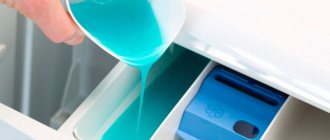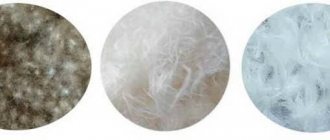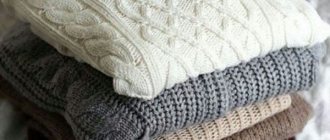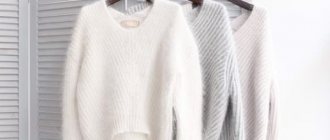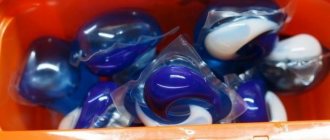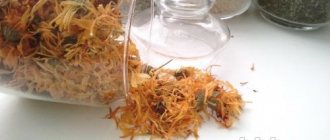How to iron velvet?
If the clothes are slightly wrinkled, it is enough to refresh them a little. Before ironing, be sure to clean the surface from stains, dirt and dust. Cleaning is possible using a brush with natural bristles and a hair dryer covered with a towel. He will “blow” dust particles out of the canvas.
Important! The air temperature of the hair dryer should be as cold as possible. It should not be brought close to the fabric. Ironing velvet will not leave unpleasant “consequences” in the form of jammed pile or seam allowances imprinted on the face, if you remember a few simple rules.
Caring for velvet at home: important tips
— Try to handle the material as carefully as possible so that you have to wash it less. The main feature of the material is its beautiful pile. Do not deform it when washing and ironing. Changes in the direction of the fibers, folds and wrinkles can ruin the appearance of the product and its majestic luxury.
— If a stain appears on the fabric, rub it with a soft cloth soaked in an aqueous solution of ammonia (1 tablespoon per 1 glass of water). Small stains can be removed with alcohol. If you notice a greasy stain on the fabric, rub it with a solution of wine vinegar (a tablespoon + 200 grams of water).
— Store things only on a hanger. No matter how carefully you stack them on the shelves, small wrinkles will still appear on them, which are then difficult to smooth out.
— To quickly remove all dust particles and small threads from velvet, carry with you a special brush or roller with adhesive tape.
Like with like
To prevent the pile from being crushed during ironing, place a piece of velvet or a thick terry towel folded 2-3 times on the ironing board. The seams can be smoothed using a brush with natural bristles.
Important! Iron the product only from the inside out.
Accuracy and patience
The iron must be held suspended, barely touching the underside of the product. Temperature and steam will do their job. Important! Be sure to let the area treated with the iron cool, then the fibers will “remember” their condition well and will wrinkle less. Store velvet items in a closed closet, hanging them on soft hangers of the appropriate size. Important! Your sissy should have enough space in her wardrobe so as not to wrinkle and be always ready to go out.
Ironing rules
Delicate material does not like rough handling, and should be ironed carefully, or better yet, without an iron at all.
- Vertical steaming is used to smooth out wrinkles.
- Moisture will make the fabric smooth. To do this, place a blanket folded in several layers on the table. Cover the top with a sheet soaked in hot water. It is leveled so that there are no creases left. Now lay out the velvet product and pin it in several places with pins. It is covered with a dry, then damp sheet. The clothes are left in this state until the morning. That's it, the dress is ready to go out.
- Foam rubber is immersed in hot water and excess moisture is squeezed out. It is laid out on a flat base and covered with a cotton cloth. The iron is held as hot as possible over the surface to cause increased steam generation. The iron is quickly set aside, and velvet is placed on the floating fabric. The procedure is repeated several times until the bruises completely disappear.
Important!
Do not iron velvet without an iron.
- As a base, you will need a down pillow, covered with a thick linen or cotton napkin or a thick layer of soft, plush fabric. Velvet is placed on it with the front side and covered with damp gauze on the back. Using a warm iron, gently iron the dress along the loop structure to avoid stretching.
Advice!
It is better to iron high-pile velvet with a steamer, and short-pile material with an iron without steam. Only from the inside out and on a soft base.
SPA care
After rinsing, allow excess water to drain. Place a thick blanket on a flat, flat surface and a large terry towel on top of it. Place the washed item on one half of the towel, straighten it and cover it with the other half of the towel. Use gentle pressure to blot excess moisture out of the velvet. Shake well to straighten the pile, and carefully place on a dry terry towel to dry completely.
Important! Do not dry the product on a hot surface - the wrinkled pile will not be lifted.
Such a delicate approach and caring attitude will return to you a hundredfold, and velvet clothes will delight you with their royally well-groomed appearance for a long time.
Handwash
How to wash a velor dress by hand? When washing by hand, you need to take into account that velvet products cannot be soaked; they must be washed immediately:
- Pour lukewarm water into a large container and dissolve laundry detergent in it, preferably liquid.
- Place the dress there and gently rub the velvet with gentle movements.
- Drain the water and rinse the item under running water.
- Don't squeeze.
- If you want to speed up the drying process, lay the dress on a towel and roll it up. Apply a little pressure to help the water absorb into the towel quickly. When the towel gets wet, change it. Then you can lay it out horizontally until completely dry.
Other uses
The scope of application of velvet is not limited to the creation of various items of clothing. It is much more extensive.
Quite often the fabric is used:
- in furniture upholstery;
- for sewing curtains;
- for creating a variety of decorative accessories.
In order for velvet products to last as long as possible, you need to know a few simple rules in caring for such a wonderful fabric. Taking care of your velvet items is indeed somewhat problematic. Modern fabric options with the addition of viscose, polyamide and other substances will not be difficult to care for even for inexperienced housewives. But take velvet on a natural basis to the dry cleaner. Or find out how to properly wash fabric yourself and whether ironing is acceptable.
A little about storage
It is recommended to hang velvet items, including trousers, on hangers. Such storage will help avoid pile creases. If you need to take velvet clothing on a trip, turn it inside out and roll it up or do it together with a terry towel.
Despite the fact that velvet requires such skillful and careful handling, the decorative effect of its use is simply amazing. That is why velvet material is always relevant. Don’t be afraid to choose this amazing fabric, because you already know all the intricacies of caring for it.
Still in fashion
Velvet has long occupied a special place among various types of fabrics. After all, it was the one that monarchs chose for their decoration. This material is characterized by a fairly dense and short pile on the front side. It includes an additional base made of natural or synthetic fibers.
A special depth of color, nobility, luxury, but at the same time delicacy and softness are properties that make velvet always relevant. In the latest collections of famous designers, there is again a surge in close attention to this undeniably chic material.
Famous tailors create different outfits based on it:
- flowing dresses of various styles;
- trousers;
- skirts;
- costumes;
- jackets, etc.
Things made of natural velvet based on silk fibers look simply charming both immediately after sewing and after long-term use. The material does not cause allergic reactions and does not cause discomfort, does not attract dust particles, is hygroscopic and drapes well. It retains its unique properties for many years. Velvet items practically do not deform and do not shrink. Therefore, they will push many fashionistas to bold experiments in search of their individual image.
What are velvet things afraid of?
- Sun rays, from which the brightness of colors is lost.
- Small specks and dust that quickly accumulate on the pile.
- High temperatures that disrupt the structure.
- Aggressive chemicals and bleaches.
- Machine drying.
- Squeezing, twisting and mechanical friction.
- Water because it stains and causes deformation.
It is still better to dry clean beautiful and expensive velvet dresses. Especially if there are stains of unknown origin. This way there will be no risk of ruining the item.
Source
Machine washable material
Machine processing of velvet is even easier than manual processing. For this:
- the product is also turned inside out and placed in a drum with similar materials of the same color, and it is better to wash it separately from other things or in a special washing bag,
- depending on the modification of the automatic machine, the “delicate wash” or “gentle wash” mode is selected; some equipment has a “velvet” mode, but such convenience is very rare,
- You cannot wring out and dry fluffy fabric in any, even the most modern, washing machine.
The selected detergent must be poured in the amount indicated on the package.
How to wash velvet items to shrink them?
In the process of improper washing of velvet, elastic deformation of the fibers of the fabric occurs. Initially, even before sewing, the tension of the fabric is usually stronger than with the finished garment.
ARTICLE FOR YOU
How to wash: leather, eco-leather, leatherette
Therefore, after getting wet, matter tends to return to its previous volumes. If the velvet base is synthetic fibers, then shrinkage will occur by 5-7%, at a temperature of 35-40%.
If its base is natural cotton, then the shrinkage will be a little greater. It is enough just to increase the recommended temperature for washing, which is 30%, and the product will decrease slightly in size.
It will not be possible to achieve greater shrinkage, because you will have to increase the temperature, which will lead to complete damage to the outfit.
Velvet material
How to wash velvet items so they don't shrink?
To prevent the capricious fabric from shrinking, you just need to remember the rules for washing products made from it, described just above. Basic recommendations:
- the manufacturer's label is studied for information on how to properly wash velvet; following these tips, the fabric will never shrink,
- cleaning is carried out as carefully and accurately as possible, things should not be rubbed against each other, twisted or twisted,
- any heat treatment with water necessarily occurs on its reverse side,
- when washing, the water should be at one static temperature, because its changes have a bad effect on the elasticity of the material.
These simple rules will help you keep your velvet outfit in the condition in which it was purchased.
Bleaching delicate fabrics
During the times of the former Soviet Union, when there was not such a variety of laundry detergents on store shelves as there are now, it was impossible to bleach velvet. Which, of course, led to the fact that white outfits made from this material lost their former shine.
Now you can bleach it if you use special gels that contain oxygen bleaches. It is important to use the gentle bleach correctly so that the effect is as expected.
They are usually used separately from other detergents, because in addition to bleaching, they clean the fabric well from dirt.
Velvet bleaching
Drying
The fleecy fabric should be slightly dry before ironing. Why is a towel laid out and she lies down on it? Existing folds and creases are removed, the material is carefully straightened. Then a tight roll is made - the fabric and towel are wrapped in a roll.
ARTICLE FOR YOU
How to wash pique items: in the washing machine and by hand
In order for the latter to be saturated with moisture as much as possible, you need to press on the roll. Afterwards it unfolds, and the wet towel is replaced with a dry one. The procedure is repeated once until the towel stops getting wet from the lint.

